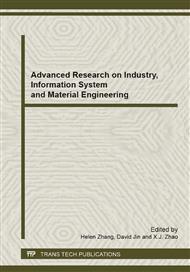p.302
p.306
p.311
p.317
p.322
p.326
p.331
p.337
p.341
The Effects of Temperature and Time on Cu-Ce Infiltration Layer of 304 Stainless Steel by Double Glow Plasma Surface Metallurgy
Abstract:
The Cu-Ce infiltration layer was formed on 304 Stainless Steel surface by double glow plasma surface metallurgy technology. The effects of heat insulation temperature and heat insulation time on surface alloying concentration, surface hardness and infiltration layer depth were analyzed by comparative test. The results showed: In the experimental range, the contents of Cu and Ce, surface hardness, diffusion layer depth increase with the temperature and time increasing; the deposition layer depth increases with time increasing and decreases with temperature increasing in a certain range.
Info:
Periodical:
Pages:
322-325
Citation:
Online since:
March 2013
Authors:
Keywords:
Price:
Сopyright:
© 2013 Trans Tech Publications Ltd. All Rights Reserved
Share:
Citation:


